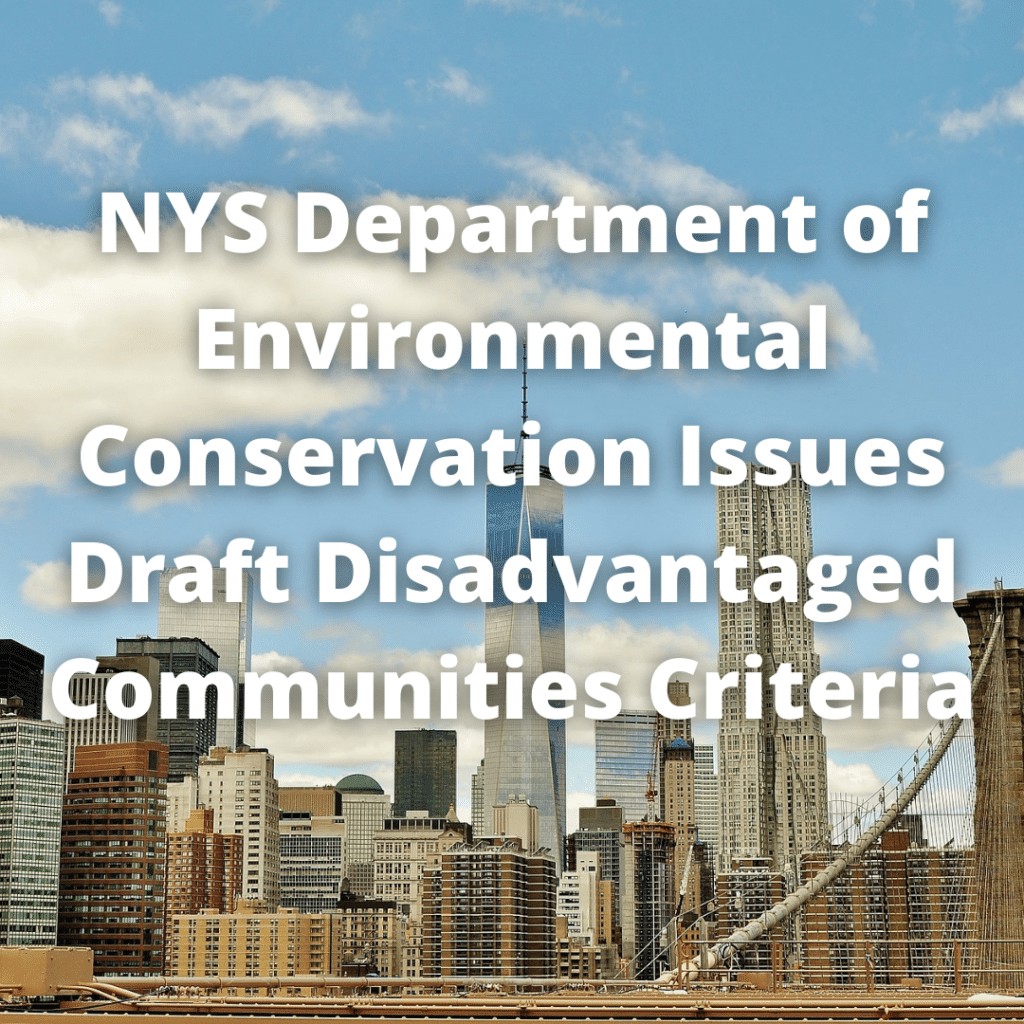Blog

NYS Department of Environmental Conservation Issues Draft Disadvantaged Communities Criteria
On March 9, 2022, the New York State Department of Environmental Conservation (DEC or the Department) issued draft criteria developed by the Department’s Climate Justice Working Group (CJWG or Working Group) for identifying disadvantaged communities in New York State. The CJWG was established under the Climate Leadership and Community Protection Act of 2019 (CLCPA) and is comprised of representatives from environmental justice communities statewide, as well as representatives from DEC, the State Departments of Health and Labor, and the New York State Energy Research and Development Authority (NYSERDA).
As previously covered by the SPR Blog, the CLCPA requires DEC to establish statewide greenhouse gas (GHG) emissions limits that achieve emissions reductions of 40% by 2030 and 85% by 2050, compared to the baseline of 1990 GHG emissions. A keystone of the CLCPA is its requirement that the State direct resources to ensure that disadvantaged communities receive at least 35%, with the goal of 40%, of overall benefits of State spending on clean energy and energy efficiency programs, defined to include investments in the areas of housing, workforce development, pollution reduction, low-income energy assistance, and energy, transportation, and economic development projects. The CLCPA tasked the Working Group with establishing criteria for identifying disadvantaged communities for this purpose. The criteria will also enable the State to comply with the CLCPA’s statutory mandate that any regulations promulgated by DEC prioritize measures to maximize net reductions of GHG emissions and co-pollutants in identified communities.
The CLCPA itself defines “disadvantaged communities” as communities burdened by negative public health effects, environmental pollution, and climate change impacts, as well as communities that possess certain socioeconomic criteria or comprise high concentrations of low- and moderate-income households. In the draft criteria, the CJWG worked to identify disadvantaged communities by evaluating forty-five indicators including: environmental exposures, burdens, and climate change risks; sociodemographic factors such as age, race, and income; pollution characteristics; and health vulnerabilities. For example, potential climate change risks include extreme heat projections; projected flooding in coastal, tidally influenced, and inland areas; low vegetative cover; agricultural land; and driving time to urgent, critical, or hospital care. Using a methodology at the census tract level, the Working Group combined and ranked all indicators into an overall score that considers each census tract’s relative burden, risk, vulnerability, or sensitivity. Pursuant to the CLCPA, the criteria includes an interactive map and a list of covered communities for directing programs, economic development opportunities, and clean energy investments.
Release of the draft criteria commenced a 120-day public comment period, running from March 9, 2022 through July 7, 2022. Six public comment hearings will also be held to allow for public input on the draft criteria, interactive map, and draft list of disadvantaged communities. DEC will announce details on the public comment hearings at a later date.